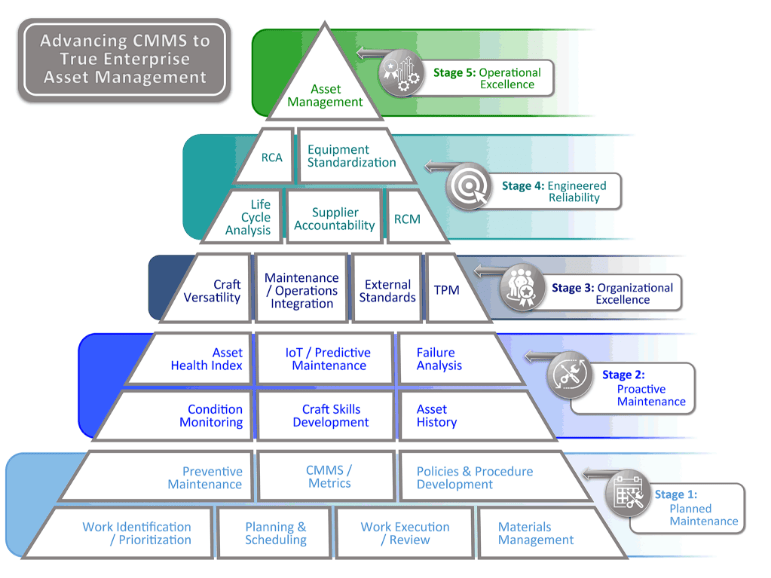
eSAM stands for EDI’s Strategic Asset Management (eSAM), which is much more than just a software solution. It is a comprehensive philosophy, program, and toolset for setting an organization on a path toward continuous improvement in Enterprise Asset Management Maximo (EAM).
The eSAM methodology is predicated on a crawl, walk, run approach to climbing the EAM pyramid (see graphic). An organization’s velocity up the pyramid is directly proportionate to its focus and commitment. A company can gain acceleration by focusing on specific areas (like specific craft groups or asset types) or prioritizing program activities over the day-to-day firefighting.
Understandably, the latter is not always an option. Most important is that the organization starts the journey, commits to following it, and develops a sustainable course and speed. EDI will help you chart this course and has a collection of solutions to accelerate it.




The eSAM Software Solution Set consists of a pre-configured version of IBM’s best of breed Maximo enterprise risk management software, EDI’s SuiteReq software, and a document library covering Standard Operating Procedures, Data Standards, and Training Materials. All of these elements are the client’s property for their unlimited use.
With the eSAM platform, EDI delivers to the customer a library of draft Role-Based Training materials based on the provided SOPs and eSAM system configuration and processes. These training materials cover the “why” and “how” aspects of the Enterprise Asset Management program and procedures. The materials are organized by role to ensure they can be matched directly to the appropriate end-user.
© 2023 EDI